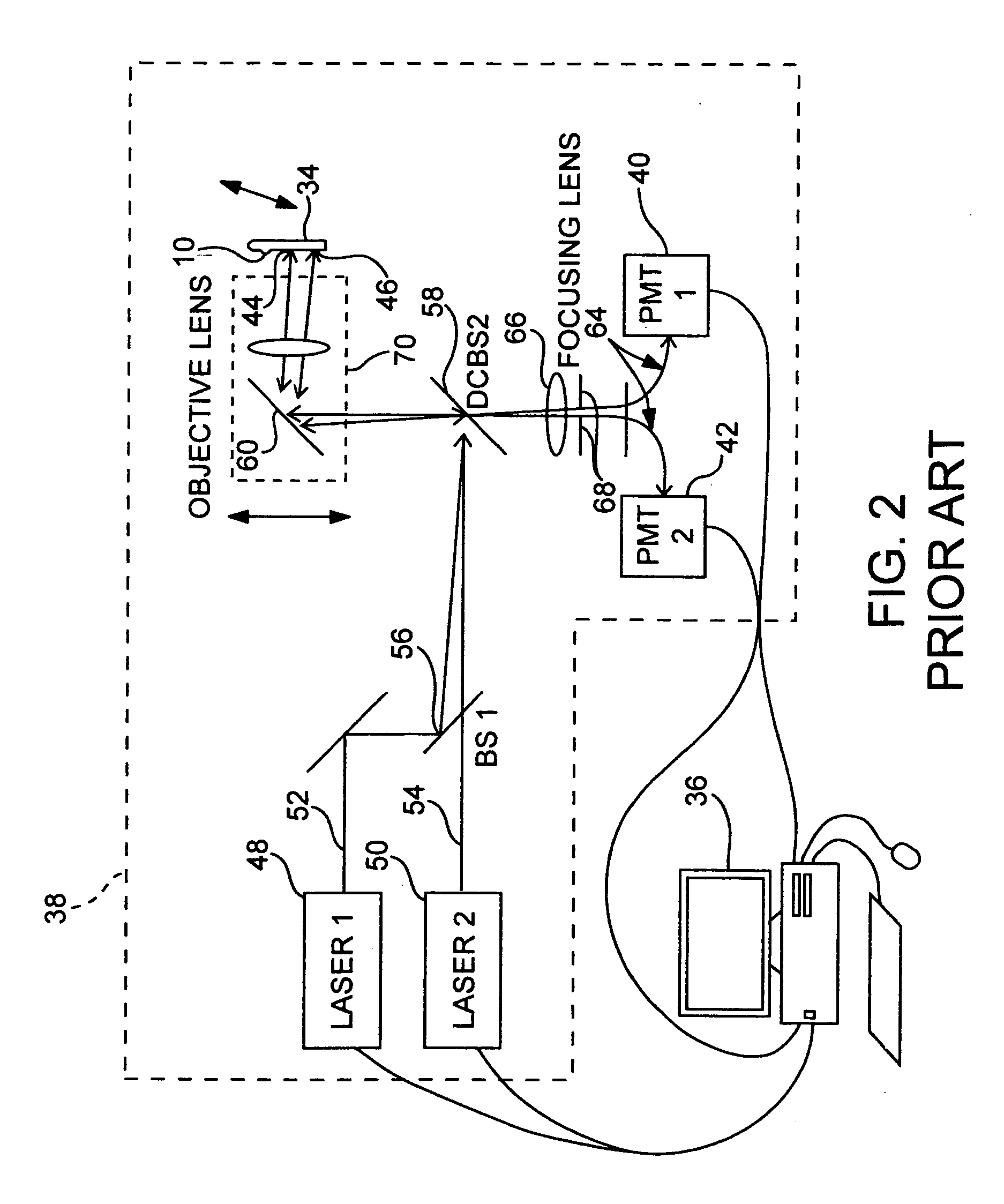Maximum sensitivity optical scanning system
a scanning system and maximum sensitivity technology, applied in the field of optical scanning systems, can solve the problems of inability to know the exact value of the detector, inability to adjust the components manually, and inability to accurately detect the detector, etc., to achieve the effect of increasing the signal strength, increasing the accuracy, and increasing the accuracy
- Summary
- Abstract
- Description
- Claims
- Application Information
AI Technical Summary
Benefits of technology
Problems solved by technology
Method used
Image
Examples
example
[0053] The present invention is preferably used in conjunction with arrays of polymeric binding agents spotted onto a surface—possibly by ink-jet printheads, by pin spotting or otherwise. The arrays will usually include at least two distinct polymers that differ by monomeric sequence immobilized on, e.g., covalently or non-covalently attached to, different and known locations on the substrate surface. Each distinct polymeric sequence of the array is typically present as a composition of multiple copies of the polymer on the substrate surface, e.g. as a spot on the surface of the substrate. The number of distinct polymeric sequences, and hence spots or similar structures, present on the array may vary, but is generally at least 2, usually at least 5 and more usually at least 10, where the number of different spots on the array may be as a high as 50, 100, 500, 1000, 10,000 or higher, depending on the intended use of the array. The spots of distinct polymers present on the array surfa...
PUM
| Property | Measurement | Unit |
|---|---|---|
| diameter | aaaaa | aaaaa |
| optical scanning | aaaaa | aaaaa |
| fluorescence | aaaaa | aaaaa |
Abstract
Description
Claims
Application Information
 Login to View More
Login to View More - R&D
- Intellectual Property
- Life Sciences
- Materials
- Tech Scout
- Unparalleled Data Quality
- Higher Quality Content
- 60% Fewer Hallucinations
Browse by: Latest US Patents, China's latest patents, Technical Efficacy Thesaurus, Application Domain, Technology Topic, Popular Technical Reports.
© 2025 PatSnap. All rights reserved.Legal|Privacy policy|Modern Slavery Act Transparency Statement|Sitemap|About US| Contact US: help@patsnap.com



